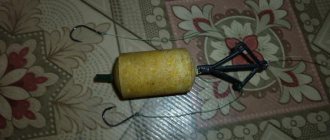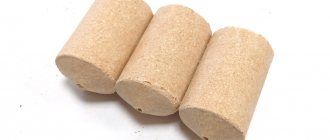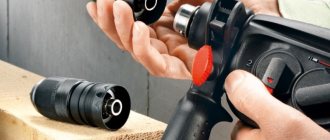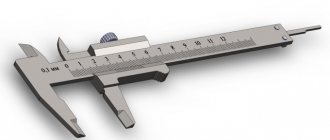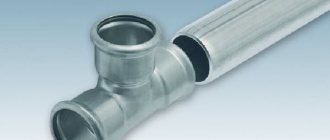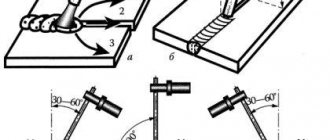A trophy in the form of a silver carp in almost all cases impresses with its size and unforgettable emotions from the process of fishing. After all, some specimens of this representative of the carp fish species reach a mass of more than two dozen kilograms and, when caught, are capable of offering decent resistance to the fisherman. In practice, there is an opinion that silver carp is an elusive fish that can only be caught by accident as bycatch when catching carp. Purposefully, many fishermen do not even plan to fish for silver carp, although there are already sufficiently developed technologies for catching fish, albeit not entirely standard and familiar fishing methods, but quite feasible both in terms of equipping the hunt with the necessary equipment and in developing promising strategies.
One of the key points of successful fishing is the ability to competently assemble a kind of equipment, where the role of bait and at the same time bait is played by such an element as technoplankton for silver carp. It is thanks to this combined attachment that silver carp fishing has become a completely solvable task for every fishing enthusiast. In continuation of our article, we will talk about this innovative and effective bait and find out how you can prepare it yourself at home. It would be useful for the fisherman to get acquainted with information on the configuration of gear for technoplankton and common fishing techniques.
Bottom fishing for silver carp (at depth)
First of all, when it comes to tackle for silver carp, it should be noted that it must be very durable.
Some specimens of silver carp can reach 30 kilograms. The gear used for catching silver carp is as follows:
- A rod measuring from 3.5 to 4.2 m.
- The reel must be inertia-free with a friction brake to reduce the resistance of the fish.
- We use fishing line 0.22-0.4.
- Hooks are selected depending on the expected size of the silver carp, but you should not use too small ones.
The main element of the equipment is the spring. This spring is clogged with bait, and you need to put pieces of foam on the hooks. This will help create good buoyancy in the leash. After the tackle hits the water, the foam swells and floats above the spring. Usually there should be no more than three leashes. The length of the leashes should be between 5 and 7 cm.
Plankton fishing
Relatively recently, fishermen had the opportunity to fish for technoplankton. In this case, it is necessary to use special equipment, which uses a sliding sinker and a barrel with technoplankton. Technoplankton dissolves in water and forms a cloudy cloud that attracts silver carp.
When fishing with plankton, the leashes float above the cloud, and this allows the silver carp to be hooked. Technoplankton contains special components that increase the appetite of fish.
In order to fish with technoplankton, you need to put foam on the hooks. This fishing method implies that the silver carp comes up to filter the clouds that have formed and is hooked. This type of gear produces pretty good results. And on some days your catch will be very significant.
Fishing with porridge
When fishing for silver carp, you can use springs and porridge to fill
It can be anything, but it is important to add at least one of these elements to it:
- Semolina.
- Vanillin.
- Cookie crumbs.
- Bran.
- Honey, etc.
This will help add additional taste and smell to the porridge, and therefore will better attract silver carp. The porridge also creates a cloudy cloud in the water, which, due to the consistency of the porridge, will remain stable in the water.
Lure
When preparing bait, you should remember that silver carp does not like strong odors. Here are some proven recipes:
One kilogram of peas needs to be boiled over low heat to make a puree. Then, while stirring, you need to add 100 grams of milk powder and half a kilogram of semolina. Stir until a very sticky consistency is formed.
It is important that the peas do not burn, this will have a negative effect. Prepare equal proportions of the following ingredients: Powdered milk
Breadcrumbs. Cake. A couple of pinches of dill
We prepare equal proportions of the following ingredients: Powdered milk. Breadcrumbs. Cake. A couple of pinches of dill.
Mix the above ingredients in one bowl. Prepare water in which you need to put a teaspoon of soda and citric acid. Then little by little add the resulting liquid into the container. Mix until you get a thick consistency.
We fill the spring with the finished porridge and throw it in. It is necessary to take into account that the porridge needs to be changed after each cast. This will increase the attractiveness of the resulting cloud after each cast.
When bottom fishing for silver carp, there are some nuances that are important for the fisherman to know:
- Silver carp is a rather finicky fish. Therefore, he may peck one day and not the next. If you decide to hunt silver carp, then at the same time fish for other fish. This will help you not to be left without a catch if something happens.
- Before casting the tackle, be sure to fill the feeder with bait and put foam on the hooks. If this is not done, then such fishing is impractical.
- Try to throw in the same place. This will help you feed a large number of fish in one place.
- You need to choose a place where there will be no coastal bushes, floating trees, snags, etc.
- If you use technoplankton for fishing, cover the leashes with bread crumbs. This will allow them not to get confused during the flight. In water, the bread will simply become soggy and fall off, and the leashes will level out.
How does bait work?
Unlike natural plankton (green slurry floating throughout the reservoir), compressed plankton gradually dissolves at one point, creating nutritious turbidity and attracting silver carp. If technoplankton is produced according to all the rules, it can “gather dust” for 2 hours. Seeing a cloudy cloud, an interested fish approaches and begins to suck in food particles, along with which one of the hooks falls into its mouth.
When you try to get rid of it, a self-hook occurs, followed by a full-fledged bite, which will be signaled by a diving float or a rod tip bent into an arc. The fisherman only needs to make a control hook and begin to slowly fish for the prey. Haste in the case of silver carp is not the best help. In the struggle for life, this strong fish can break any fishing line, even the strongest. Therefore, first you need to tire her away from the shore, without frightening her with her own silhouette, and when she noticeably weakens, you can pull her closer and take her into the landing net.
Do-it-yourself technoplankton: what is needed to make it?
At the moment, technoplankton is produced at home in two ways:
- Power pressing of the mixture in a special metal mold without heat treatment.
- Baking the composition lightly pressed in a plastic mold in the microwave.
The second option is much more affordable, because the material for making molds is much easier to find.
In fact, any plastic tube of the required diameter (about 3.5 cm) is suitable for making technoplankton.
You also need to make a plug and a piston that will compress the mixture inside the tube. The easiest option is to use a 20 cc syringe as a plastic mold.
Manufacturing process:
- The raw materials are poured into the mold, then a piston is inserted into it, and the mixture is compressed with a slight force.
- Then, the mold is placed in the microwave for 7-10 seconds, after which the raw materials are finally compressed using a piston, and the entire structure is sent into the microwave for 25-30 seconds.
- After this, you can remove the ready-made technoplankton outside.
If you want to seriously engage in the production of the bait in question in large quantities, it is better to abandon the method described above in favor of the cold pressing method in a special metal mold.
A drawing of a homemade mold with dimensions can be easily found in the public domain. Here is one of them:
It is unlikely that it will be possible to make a normal metal press mold from scrap materials. Therefore, you will have to turn to a familiar turner for help. You can do it even simpler and buy a ready-made mold.
Read Zherekh
Now there are many such offers on the Internet. The price of the mold ranges from 600-1000 rubles. Approximately the same amount is spent for one fishing trip with industrial technoplankton...
To press the mixture without subsequent baking, you need to create high pressure. As a press, you can use a hydraulic or mechanical jack, which will compress a special metal frame.
But, in my opinion, the easiest way is to purchase a large mounting clamp and use it as a press.
How to properly catch silver carp killer tackle
The best time to catch silver carp is from early morning until lunchtime. Sometimes he can feed intensively for a couple of hours in the evening. Having chosen a promising fishing point and prepared a place on the shore to install the gear, they load the feeder with bait or use technoplankton as bait.
Non-massive rigs are cast with a rod. Having made the cast, the cord is tightened using a reel, and the tackle is placed on the signaling device and awaits the approach of the trophy. In the absence of fish activity, the feeder is recharged with complementary foods every 2–3 hours. A float placed on its side, signaling the emptyness of the feeder, will allow you to visually determine the lack of complementary foods. On subsequent casts, the fishing horizons are changed. As a rule, the first casts are made into the water column about one meter from the surface, each time increasing the depth for the next cast by exactly a meter. As a result of a distinct bite, during which the fishing line is pulled together, the so-called steam locomotive in the fishing community, the fisherman immediately begins to fish. Hooking is not required when fishing for silver carp; in almost all cases, the fish are caught on their own.
Fishing requires a lot of effort and constant control of the tension of the cord, which should release only as a result of the operation of the clutch. It is recommended to use a hook instead of a landing net. After all, a silver carp catch of 30–40 kilograms is not uncommon, and given the size of such a fish, a landing net will not always be at hand.
How to lure silver carp
In fact, the main bait for silver carp, technoplankton, can also be called bait. It creates a cloud of turbidity, like bait in a feeder. Therefore, it is both a bait and bait at the same time. Let's look at how to make porridge for catching silver carp.
What to make bait from
Silver carp, like carp, are attracted by many smells - anise, vanilla, cake, sweet aromas, cereals can be used.
Recipe 1.
For 3 kg of bait you will need:
- Flour - 1000 g.
- Powdered milk – 1000g
- Starch - 500 g.
- Vanilla sugar - 5 g.
- Bran - 500g.
Sand or soil from the shore
is added to the bait First, the first four components are taken, mixed with soil until a homogeneous mass is formed, and water is poured into it. All bait is mixed until the desired thickness is obtained. Then bran and, if necessary, water are added to the mixture and stirred again. The resulting composition should infuse for 20 minutes. The density of the bait must be adjusted to the fishing conditions. If there is a current, then the bait should be denser; if there is no current, then you can make it looser. Second recipe.
There is also an option with green bait. Nettle, clover and grass near the pond are taken in equal proportions and twisted through a meat grinder. Several cucumbers without skin are added to this mixture. It is better to remove the skin, as it is hard and may even be bitter, which will scare away the fish. The crushed greens are left to infuse for 2 hours. Then bran is added to the mixture at a ratio of 1 to 3 . As in the first recipe, the mixture is brought to the desired condition using coastal soil.
☸ Tackle for fishing with technoplankton
The set of float and bottom gear for silver carp fishing is approximately the same, the only difference is the presence of a float in the first and some differences in the assembly of the equipment. Typically the kit consists of:
- a durable fishing rod up to 4.2 m long, capable of withstanding landing trophy fish;
- a powerful reel with a spool size of 4000-5000, equipped with a friction clutch and a baitrunner;
- monofilament with a thickness of 0.25-0.35 mm (stock of at least 100 meters);
- a clearly visible barrel-shaped float (for a float fishing rod);
- sinker, which is selected depending on where it will be mounted, on the main line or on the equipment (in bottom fishing, an element such as a feeder weight is more often used);
- one or more hooks commensurate with the object being fished;
- trempel (silver carp sticks) - a special triangular device with ears for leashes and a pin for pressed plankton.
Where to look for silver carp
Silver carp breed in very warm, running water. Most reservoirs in our country simply do not have the necessary conditions for its natural reproduction. Therefore, you need to look for it first of all in ponds where it was introduced artificially. In order to count on catching a trophy specimen, the silver carp had to be released into the reservoir at least 7 years ago. Its habits and the places it stays change depending on the season.
Features of behavior depending on the time of year
Silver carp does not fall into complete inactivity in winter.
It stays near holes in the depths, occasionally coming out to feed. At this time, it feeds on what is located at the bottom, silt deposits and small crustaceans. When the ice melts , but the water has not yet warmed up, it continues to be near the bottom. When the water warms up and life begins to revive in it, the lobate rises to the surface. In spring, one peculiarity of this species of carp becomes especially obvious - it jumps high out of the water, sensing unusual sounds. In this way, by creating noise yourself, you can provoke the silver carp to reveal itself.
In the summer, silver carp stays near places with vegetation, as well as near edges with a sharp difference in depth. This can be explained by physiological characteristics, since the location of the silver carp’s mouth allows it to conveniently feed from the surface and from a slope. On cloudy days it goes deeper and into its favorite places - snags.
In autumn , with the gradual disappearance of vegetation in the reservoir, the activity of silver carp also decreases. In search of food, silver carp goes deeper, and when the water temperature drops to 8 degrees, it moves to wintering pits.
Spawning.
Sexual maturity in silver carp occurs at the 5th year of life during the summer flood. Spawning requires special conditions: water heated above 20 degrees and its flow, since the eggs need a large amount of oxygen. The eggs float, most of them die due to unfavorable factors or are eaten by other aquatic inhabitants. When hatching, juvenile silver carp feed primarily on zooplankton.
Equipment equipment
The kit for making tackle for silver carp includes the following components:
- strong rod. It can reach up to 5 m in length;
- multiplier inertial coil;
- monofilament line;
- a cone-type or egg-shaped float with a load capacity of up to 60 g. It is advisable to choose a float that is equipped with a keel to avoid fluctuations in the bait when there is wind;
- medium sized rubber stoppers. Thanks to them, it is possible to adjust the depth of hooks immersed in water, as well as complementary foods;
- plastic bead. It must have a fairly significant circumference in order to provide a stopper for the float at the time of opening;
- damper in the form of a rubber bead. It is necessary to protect the site of the knot so that there are no breakthroughs when the heavy float hits when casting;
- swivel with fishing line. Its length should be no more than half a meter. It is necessary in order to eliminate situations where hooks may get caught on the equipment. Also, thanks to them, displacement of the float and sinker will be prevented;
- olive. This is a sinker that is necessary for loading the float, and, in addition, for making adjustments and correct placement of the bait when it is lowered into the water;
- a T-shaped trample, having an oblong rod and complemented by three rings with a fishing line attached to the upper end, and a leash with hooks attached to the other two;
- elastic leashes of high strength, which must be woven from threads or fluorocarbon. Their thickness should be 0.18 mm and their length no more than 7 cm.
- Hooks from No. 8-12. They will provide a solid hook on the fish. The silver carp has very sensitive receptors in its mouth. When a silver carp is pricked by a hook, it can simply spit it out, and as a result the fish will break off.
Design of bottom tackle for silver carp
The design of equipment intended for catching silver carp is made of metal elements. Most often, knitting needles are used or wire is used. At the moment you can find gear that is equipped with threads for technoplankton. In terms of design, the tackle can be bottom or float.
When making bottom equipment for catching silver carp with an elastic band, an important element is a spring, which is equipped with technoplankton. When installing equipment, it is necessary that it be powerful enough. The weight of silver carp can reach up to 35 kg. If a fisherman’s tackle is weak, then it simply won’t support such a big fish. When making tackle for catching silver carp with an elastic band, 3 leashes are used, each of which is 7 cm long. In addition, a spring is used as the main element.
Float rigs cannot do without the use of a sinker and a large float, which is necessary to hold the rig on the water in one place. The float gear is equipped quite quickly. However, when assembled, it has a rather bulky appearance. This is its main disadvantage.
Features of bottom equipment for silver carp
The average weight of silver carp varies between 25–35 kg. For this reason, a fisherman's rod must be quite strong to ensure successful fishing.
For donkey, the process of making equipment is as follows:
- the sliding sinker is attached to the main line using a limit stop;
- a stick is tied to the end of the fishing line of the central eye;
- leashes are mounted to the two remaining ears;
- Styrofoam balls are placed on the hooks. This is necessary to avoid the rig lying down when it reaches the bottom;
- Rubber tubes attach the bait to the pin.
Read How to determine the age of a fish
Bottom equipment is quite suitable for catching silver carp, provided it is used correctly
It allows you to ensure a good catch, even taking into account the fact that the structural features of the jaws of silver carp prevent the rise of food located at the bottom
In order for fishing to be successful, you should choose powerful tackle that can withstand weight up to 36 kg
When installing the equipment, the angler must pay special attention to the spring. It must be filled with feed that has a viscous consistency. Styrofoam balls must match the size of the hooks to ensure they float
The foam balls must fit the size of the hooks to ensure they float.
When the hooks are again at the bottom, they will be raised by the floats along the spring to the top of the leashes, the length of which is 7 cm. Thus, it is the hooks that the fish that are located above the bait located at the very bottom of the reservoir will grab.
Features of fishing using technoplankton
The secrets of fishing for technoplankton have long been known to everyone. It only seems at first that some special skills are needed here, but after two or three trips to the pond and the capture of the first handsome guys, everything falls into place. The hands know what to do, and the fisherman feels in his element.
The main thing is to correctly mount the equipment and securely secure the barrel of plankton, which performs two functions at once: bait and groundbait. It is advisable to put foam balls on the hooks to make them buoyant. Some fishermen simply hide hook tips in technoplankton; this option is also quite suitable. When everything is ready, the tackle is thrown into a promising place, and the rod is fixed on the stand.
Fishing techniques and tactics: tips and tricks
One of the fishing tricks when catching silver carp is to camouflage the hook with pieces of algae. As a rule, the fishing line tightens when bitten, after which it noticeably weakens and tightens again. This is what happens: he greedily swallows the bait and tries to hide with the prey from his relatives. This maneuver leads to the fish hooking itself. But if the sting of the hook is not sharp, after being pricked, the silver carp will spit out the hook and leave the troubled place along with its fellow tribesmen. That is, you need to hook it at the moment when the line is stretched for the first time.
If the moment of first tension of the line is missed, the further outcome of events depends not so much on the fisherman, but on his potential catch. After he makes the first jerk, he freezes, as if assessing what happened. If he suspected something, there would simply be no jerk a second time. In the opposite situation, the matter will most likely end in self-cutting. However, with any of the options, the first pull of the fishing line will tell the angler that it is time for a fight.
Once hooked, the fish will immediately put up serious resistance. At the same time, he will definitely do crazy things. After the first jerk, feeling the pain from the sting of the hook, the silver carp will try to hide somewhere in the thickets. If this succeeds, the fisherman is unlikely to be able to seduce him with bait again.
Hooks and leashes
Too large a hook size can alert a cunning fish, but this does not apply to silver carp, which will go straight ahead if they see that there is something to profit from. Hooks number 1–2 according to the European classification in the form of Wide Gape are a good choice, but it is better to use hooks with a curved tip.
The fact is that the design of the “silver carp killer” tackle involves self-hatching of the fish, and the curved tip of the hook with a wide mouth will provide just such a hook.
Hooks for the “silver carp killer” tackle must be:
- durable;
- with a wide mouth;
- spicy;
- inconspicuous;
- lungs.
The last condition is very important, since when a silver carp captures grains of technoplankton in its mouth, the hook should easily fly into its mouth and catch its lip. Hayabusa W-1 hooks will be the best choice for catching silver carp.
Hayabusa W-1 hooks will be the best choice for catching silver carp.
These hooks are made of black nickel, very sharp and durable, with a long shank and a curved sting shaped like a hawk's claw. Kamasan hooks with Teflon coating in large sizes are also suitable.
Important! Fishermen have noticed that on sunny days, gold-coated hooks perform well. So you need to have them in stock and when the biting activity decreases, try to put it on the “killer” and catch a fish.. For knitting leashes, use soft leash material, or braided cord, with a breaking load of at least 25Lb
If there is a trophy silver carp in a reservoir, then the probability of its capture is high, and you need to be prepared for this by tying up strong and reliable equipment
For knitting leashes, soft leash material, or braided cord, with a breaking load of at least 25Lb is used. If there is a trophy silver carp in a reservoir, then the probability of its capture is high, and you need to be prepared for this by tying up strong and reliable equipment.
When hooking and landing fish, a significant load falls on the leader material and it must withstand the pressure of a trophy silver carp. Monofilament line or fluorocarbon materials are not suitable here due to their rigidity. The length of the leash should be such that the hook hangs 5–10 cm below the technoplankton briquette.
In this case, the approaching fish will swallow the “dust” from the bait from below and the hook will definitely fall into its mouth. Lengthening or, even more so, shortening the leash will lead to the fact that the tackle will not work.
The fisherman will sit on the shore and wait for a bite, which will not happen due to such a small thing as the wrong length of the leash. It’s a banal phrase, but it needs to be said - be sure to check the sharpness of the hook before casting the tackle, if, of course, you want to catch fish.
When to catch silver carp
What time of year to fish
- The best time of year for catching silver carp is summer. During this period he is especially active. The number of bites will be especially high during the spawning period. At this time, he is especially hungry and will try to eat more. Don't be surprised if the bites happen one after another.
- Usually the best time for biting is considered to be early morning and evening. However, in some reservoirs the bites may not stop throughout the whole day.
- Already in September, silver carp stops pecking and behaves passively. Every bite at this time is worth its weight in gold. So try to do everything right.
- In winter, silver carp are not caught. At this time, it goes deep to the bottom and buries itself in the silt.
What time of day to fish, features of fishing at different times of day
- It is best to catch silver carp in the morning and evening. At this time of day, the silver carp is looking for food. Therefore, it is best that before this time your gear is already in the water. In this case, your chances of getting a bite increase.
- During the day, the fish usually go to the bottom, and at night, silver carp bites occur very rarely. But you shouldn't neglect this. Leave one “silver carp killer” in the water.
Choosing a fishing spot
It is best to catch silver carp in those places where it was launched a long time ago. This fish usually stays far from the shore: even in the morning and evening it does not come within 20-30 meters.
Useful tips
• When preparing technoplankton at home, it is important to thoroughly mix all the ingredients so that they are not compressed into layers. • If the fish are located at different horizons, it is more advisable to use float gear, which allows you to fish at any depth. • During the daytime, silver carp prefers to be far from the shore, so the tackle should be cast as far as possible. • Successful silver carp fishing largely depends on the attentiveness of the angler. Despite its impressive size, this fish knows how to peck gently and imperceptibly, so you can’t relax. A powerful pull can happen at any second.
Equipment and arrangement of float gear
Technoplankton itself is very hard; it cannot be driven into the feeder like regular bait. For its installation, they came up with a special wire structure, similar to a trempel.
Technoplankton is put on a wire rod, hooks connected by leads with wire “ears” cling to the edge of the bait.
Next, the fully equipped trempel is tied to the main line and thrown into the water. The technoplankton gets wet and a cloud of turbidity forms around it.
The silver carp approaches the bait, begins to suck it, the hooks fall into its mouth, dig into the soft tissue, and the fish hooks itself. This rig is often called the “head killer” due to its exceptional effectiveness.
Tramps for catching lobato can be purchased at some fishing stores. But they are also easy to make with your own hands.
They are made from ordinary bicycle spokes. The needlework process does not take much time; the necessary tools can be found in every home. I suggest you familiarize yourself with the detailed photo manufacturing instructions.
The leashes are knitted by hand, from soft braided fishing line, with a diameter of 0.18-0.2 mm.
Hooks must have exceptional sharpness and not break or unbend when fished. I can personally recommend using self-hooking hooks GAMAKATSU LS-3513 No. 2 from Gamakatsu.
Now let's talk about the design of the float tackle. The figure below schematically shows the layout of all its elements.
The fact is that for catching silver carp, very large floats are used, with a carrying capacity of 40 to 100 grams, with long antennas and voluminous bodies.
Such floats sail very strongly, so the equipment will constantly be blown away, even with a slight wind.
A sliding sinker weighing 30-50 grams works like an anchor, holding the entire equipment at one point.
The through hole in the weight must be large in diameter so that the stopper can easily pass through it.
An olive weight near the trempel with technoplankton serves as a weight for the float. Weight is selected empirically.
Read Silver carp: benefits and harms
It must be such that, together with the weight of the empty tram, it provides the float with an inclined position on the water. With technoplankton on the rod, the float should stand vertically.
This setting makes it possible to track the moment when the bait becomes completely limp and you need to replace the “tablet” with a new one.
Types of fishing rods
Choosing a fishing rod for fishing for technoplankton must take into account the habitat of the fish. 1. To catch silver carp in the upper water levels, you need float gear. It is based on a 4-5 meter rod with any reliable reel. An important point of equipment is the correspondence of the load-carrying capacity of the float to the weight of the equipment. If the maximum weight of the technoplankton is maintained at the moment of sinking, then the float antenna should be barely visible from under the water. As the plankton is washed away, the weight of the equipment decreases, and the bite alarm is more clearly visible on the surface of the water area. A sliding sinker is mounted on the main line, acting as an anchor. In the absence of current and wind, the sinker does not need to be installed. 2. The second version of the float equipment allows you to catch fish in the middle and bottom layers. In this fishing rod, the float and silver carp stick are adjusted so that the entire equipment sinks to depth. That is, the carrying capacity of the bite alarm should be less than the total weight of the silver carp stick and technoplankton. 3. The simplest type of gear is considered to be a bottom fishing rod. To complete it you will need a powerful rod with a reel and reliable fishing line. A silver carp stick with leashes tied to it is installed on the main fishing line. Foam balls are attached to the hooks, the main task of which is to impart buoyancy to the bait. An additional sinker is mounted to the pin of the stick, capable of holding the equipment in the selected place.
Fishing Features
The main food is phytoplankton, and fishermen who go to the reservoir to catch this fish try to imitate this food with all kinds of cereals, peas and other “goodies”, which produced a small cloud of turbidity in the water column from these baits, which sometimes attracted the silver carp to the feeder with hooks.
Many fishing product manufacturers were also looking for the possibility of creating a universal bait for catching silver carp. In this case, the nozzle must simultaneously perform 2 functions: lure, creating a fine suspension in the water, and when passing this mixture through the mouth, hook the fish.
Technoplankton fully copes with this task, being today the ideal bait for catching silver carp.
This bait has a cylindrical shape, with a special hole for fastening. A technoplankton tablet fixed in a special holding device forms a cloud of turbidity around it with small particles of food. Hidden in this cloud are small leashes with hooks that reliably hook fish while filtering technoplankton through the gills.
This method of fishing has one significant drawback: technoplankton cannot be fished in reservoirs with a current, which will instantly wash away the cloud that attracts the fish and the hooks will be completely open.
Technoplankton Recipes
The main requirement for bait for silver carp is the creation of a stable cloudy cloud. At the same time, we must not forget about the forehead’s predilections for certain foods. In other words, technoplankton should be well dusted and tasty. In practice, the following mixtures performed well.
Recipe 1 (for making one barrel)
- 30 g corn flour;
- 15 g oatmeal;
- 15 g semolina;
- 30 g buckwheat flour;
- 15 g milk powder.
Recipe 2
- 30 g millet flour;
- 30 g corn flour;
- 20 g breadcrumbs;
- 15 g dry cream;
- 0.5 tsp. sugar syrup.
Choosing a fishing spot
To find out if there are silver carp in a pond, there is a simple way. In the designated places, as close to the water as possible, break off the stems of the reeds and lower them into the water. Do this in several places where you intend to fish. Return to the starting place and examine the broken plant. If it is gnawed, there is a silver carp.
There are several main signs by which you choose a place to catch this cautious fish:
- The presence of a rocky, sandy or clayey bottom;
- The optimal depth is 2.5-3 meters;
- The wind direction should be counter;
- The water should be clean and clear;
- The weather should be warm and windy.
Bait for silver carp
It will be very useful to feed the intended place for catching silver carp. Moreover, it is not necessary to feed with dusty bait; it will be enough to prepare aromatic bait that will attract silver carp with its smell. It may include the following ingredients:
- honey;
- anise;
- hemp oil;
- purchased bait;
- boiled porridge (barley, barley, millet);
- peas;
- semolina;
- bread;
- halva;
- bran;
- cookie;
- wheat flour, etc.
Every experienced fisherman has his own special bait recipe for silver carp, and you will definitely have it. Perhaps you will learn from more experienced fishermen, perhaps you will select the optimal ingredients yourself. It's just a matter of time. Catch and gain experience.
When to catch silver carp
Since this fish is heat-loving, its peak activity occurs on warm days. The silver carp begins to bite in May, and ends somewhere in October. In the month of October, it can only bite on warm days, but since the water has already cooled down, the bite can be short-lived. During this period, the fish is already beginning to prepare for the winter and its appetite practically disappears. In the month of October, you need to try very hard to interest silver carp.
Silver carp actively bites during periods when there are weak waves on the surface of the reservoir. This is due to the fact that in calm weather the silver carp is able to detect suspicious noises and can behave warily. The bite of this fish can continue day and night. Moreover, at night it behaves actively in calm weather. But this does not mean that absolute silence should not be observed. Silver carp, like other fish, especially at night, easily picks up the smallest rustles, especially in calm weather. Everyone knows that at night sounds travel quite far across the surface of the water.
In spring and summer, silver carp are caught from the bottom. In the spring, when there is still no vegetation at the bottom of the reservoir, it migrates in search of plankton, being in close proximity to the bottom. Therefore, during this period it is preferable to catch it with a feeder. In summer it can be caught in any layer of water. At the same time, the bite is absolutely unpredictable. Sometimes he bites for a couple of hours and stops biting for a couple of days, and sometimes he is actively caught throughout the day and night. Catching silver carp is a pleasure, because just one bite can bring a sea of adrenaline.
Silver carp: description and behavioral characteristics
The main habitat of silver carp is considered to be the Amur River basin. In the European part of Russia, this fish appeared relatively late.
The silver carp was unable to fully acclimatize, so the population is replenished by individuals grown in vitro. The body of the silver carp is oblong and wide, covered along its entire length with small silvery husks. This species of fish has an unusually wide head and eyes that are located below the midline.
The mouth is quite large and directed upward. Fused gill rakers allow water to be filtered. The lines of the fins converge at sharp angles. Silver carp reaches a length of more than 1 meter and a weight of 50 kilograms. Spawning occurs in late spring or early summer at a temperature of +18.
A female silver carp can lay up to 500 thousand eggs. Old individuals are rather clumsy and often suffer from obesity. On hot days, silver carp come to the shore in large flocks, or swim in the upper layers of the water.
The diet of young individuals is dominated by zooplankton, while that of adults is dominated by phytoplankton. However, silver carp can eat almost any plant food, and sometimes of animal origin. It is not uncommon to catch large silver carp using bait for predatory fish.
Tackle for catching silver carp
Practically, equipment for catching silver carp can be divided into 2 types: bottom and float.
For bottom fishing, feeder spinning rods are used, which are equipped with either a feeder spiral, or a “silver carp killer tackle” (a silver carp stick) is used.
To make a “silver carp stick,” a bicycle spoke is most often used. A frame is bent from it, to which hooks and weights are tied, as well as bait (technoplankton or a spiral with porridge)
You can learn more about the installation of gear by watching this video:
To catch silver carp using float gear, use either a regular float or a sliding one. Moreover, this equipment also contains a stick.
Float tackle for silver carp
Let's start installing the float gear. We pass a weight (30-40 g, sliding) onto the main line, then thread the stopper and pass the float. Afterwards, we attach a shot with a bead and tie a silver carp stick. We equip it with technoplankton or porridge.
Leashes should hit no more than 10 cm, hook size within 7-12 according to domestic standards.
Styrofoam is used as bait. It lifts the hooks that the silver carp sucks while feeding above the feeder.
Fishing for silver carp using technoplankton has become quite widespread among fishermen due to its results. It would be a sin not to mention him in our article. Technoplankton is often purchased, but craftsmen know how to make it themselves.
In order to make technoplankton ourselves we will need:
- Pea flour.
- Carp bait with betaine.
- Technoplankton (in powder form).
- Groundbait "Green silver carp".
- Baby food for infants.
Now we need to mix it all in the following proportions:
- 4 servings of carp mixture;
- 3 servings green silver carp;
- 4 servings of pea flour (it is needed for binding when pressing);
- 3 servings of baby food;
- 3 servings of technoplankton.
After watching the following video, you can make a matrix for technoplankton based on the sample. And do it yourself.
Content:
- 1 Tackle
- 2 Equipment 2.1 Bottom equipment
- 2.2 Float equipment
Just recently, anglers tried to catch silver carp using unusual baits. Among such baits one could find:
- carrot;
- cucumber;
- sorrel;
- nettle;
- clover;
- various algae.
In addition, they also tried to add products familiar to all anglers:
- semolina;
- canned corn;
- steamed peas.
With the advent of technoplankton, the approach to catching silver carp has changed dramatically. Technoplankton is a food powder pressed into a barrel shape. This made it possible to use conventional gear, such as a bottom or float rod, for catching silver carp.
